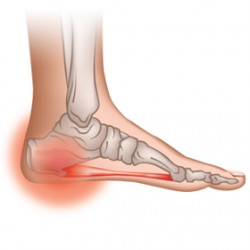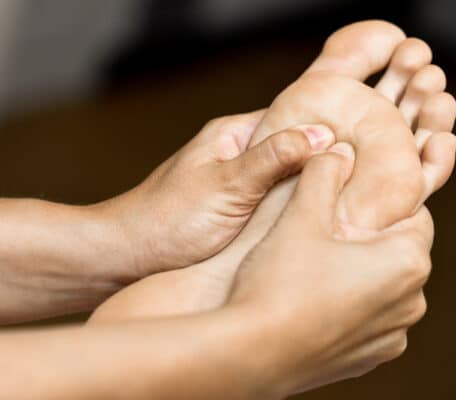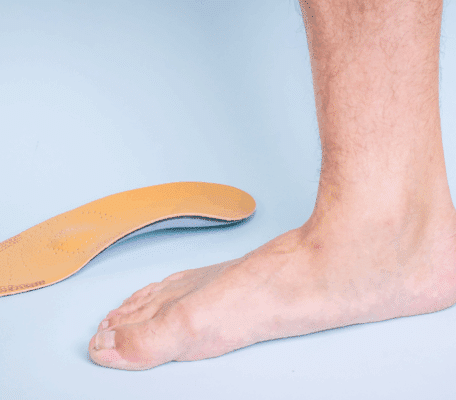There are a variety of foot conditions that can cause discomfort for people when they are trying to engage in their regular, everyday activities like walking. One such condition is heel spurs. Here is more information on what heel spurs are, what causes them, and how they can be treated.
What is a Heel Spur?
 A heel spur is a calcium deposit on the bottom of the heel. Heel spurs can sometimes be seen on an x-ray of the foot; in fact, some heel spurs can be seen to protrude by as much as half an inch. In other cases, symptoms of heel spurs are present, but there is no noticeable protrusion on an x-ray. In this case, the diagnosis of heel spur syndrome is made.
A heel spur is a calcium deposit on the bottom of the heel. Heel spurs can sometimes be seen on an x-ray of the foot; in fact, some heel spurs can be seen to protrude by as much as half an inch. In other cases, symptoms of heel spurs are present, but there is no noticeable protrusion on an x-ray. In this case, the diagnosis of heel spur syndrome is made.
A heel spur that is visible on x-ray can be present without causing pain, but heel spurs are often a source of pain for many people. They often occur in conjunction with another foot disorder called plantar fasciitis, which is an inflammation of the connective tissue that connects the heel with the ball of the foot.
What Causes Heel Spurs?
Heel spurs are caused by a buildup of calcium on the bottom of the heel. This is a process that occurs over an extended period of time. The development of a heel spur can be triggered by straining the ligaments and muscles in the foot or stretching the plantar fascia. Athletes, particularly those who engage in large amounts of running or jumping, tend to develop heel spurs.
There are a variety of risk factors that contribute to the development of heel spurs. These risk factors include the following:
- Improper gait, particularly when the gait places excessive stress on the heel;
- Jogging or running, particularly on hard surfaces like roadways;
- Wearing shoes that lack support or don’t fit properly;
- Being overweight;
- Aging;
- Diabetes;
- Having high arches;
- Having flat feet; and
- Spending long periods of time standing.
Symptoms of Heel Spurs
A person can have heel spurs and not notice any symptoms. For many patients, the pain of heel spurs is intermittent. Pain is often felt by the patient when they first stand up in the morning. Over time, the pain subsides, and it returns after the patient sits for an extended period of time or during activity, like walking or jogging.
Rest is not always the best treatment for heel spurs due to their relationship with plantar fasciitis. When the body is at rest, the plantar fascia tightens. When you first stand up in the morning and start to walk, the plantar fascia is forced to suddenly elongate. Over time, it stretches out, and pain subsides. But intense periods of activity can aggravate the pain, as well.
Treatment for Heel Spurs
There are a variety of methods that can be used to treat heel spurs. Over-the-counter anti-inflammatory medications like Ibuprofen or can help to relieve pain.
- Ice works in much the same way as anti-inflammatory medications, by reducing inflammation to the affected area. Rest combined with ice is often an effective treatment for heel spurs / plantar fasciitis.
- When more conservative measures like rest, ice, and anti-inflammatories are ineffective, a local injection of cortisone can be given to reduce pain and inflammation in the area of the heel spur.
Physical therapy and stretching exercises are helpful, as well. One of the most common and effective treatments for plantar fasciitis and heel spurs is specialised footwear. This can involve having your feet evaluated and ordering customised shoes, or wearing shoe inserts or orthotic devices.
If you suffer from foot pain caused by heel spurs or plantar fasciitis, contact Foot Solutions. We have the knowledge and resources to custom fit you with shoes & arch supports that will help to minimise your pain and make your daily activities comfortable again. To learn more about the options available for treating your foot pain, call Foot Solutions.



